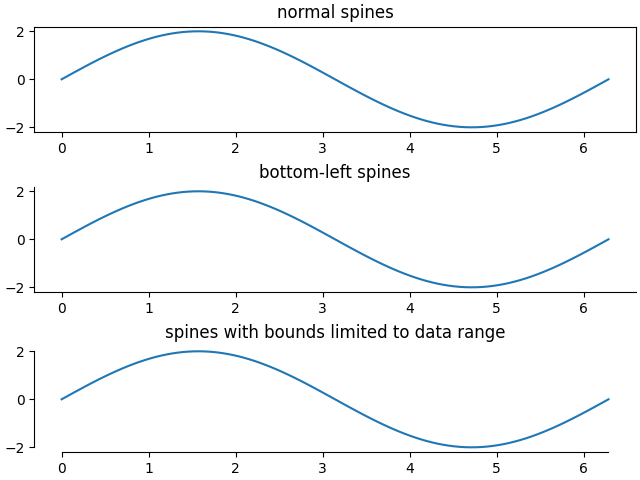Note
Go to the end to download the full example code
Spines#
This demo compares:
normal Axes, with spines on all four sides;
an Axes with spines only on the left and bottom;
an Axes using custom bounds to limit the extent of the spine.
Each axes.Axes has a list of Spine objects, accessible
via the container ax.spines.
import matplotlib.pyplot as plt
import numpy as np
x = np.linspace(0, 2 * np.pi, 100)
y = 2 * np.sin(x)
# Constrained layout makes sure the labels don't overlap the axes.
fig, (ax0, ax1, ax2) = plt.subplots(nrows=3, layout='constrained')
ax0.plot(x, y)
ax0.set_title('normal spines')
ax1.plot(x, y)
ax1.set_title('bottom-left spines')
# Hide the right and top spines
ax1.spines.right.set_visible(False)
ax1.spines.top.set_visible(False)
ax2.plot(x, y)
ax2.set_title('spines with bounds limited to data range')
# Only draw spines for the data range, not in the margins
ax2.spines.bottom.set_bounds(x.min(), x.max())
ax2.spines.left.set_bounds(y.min(), y.max())
# Hide the right and top spines
ax2.spines.right.set_visible(False)
ax2.spines.top.set_visible(False)
plt.show()

References
The use of the following functions, methods, classes and modules is shown in this example: